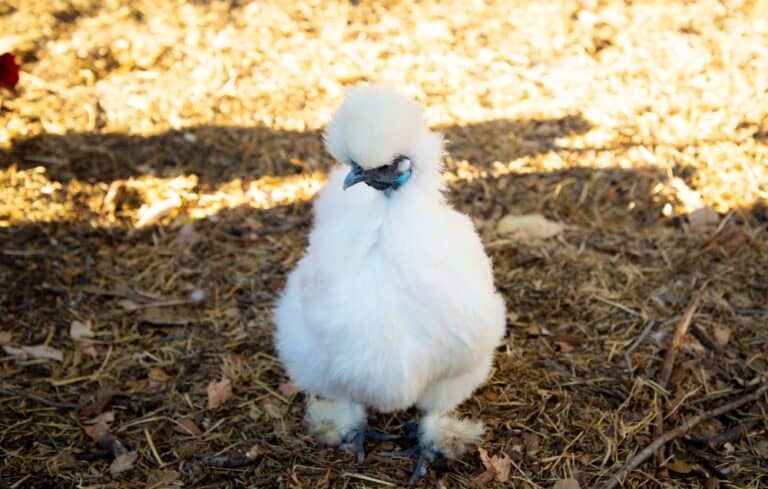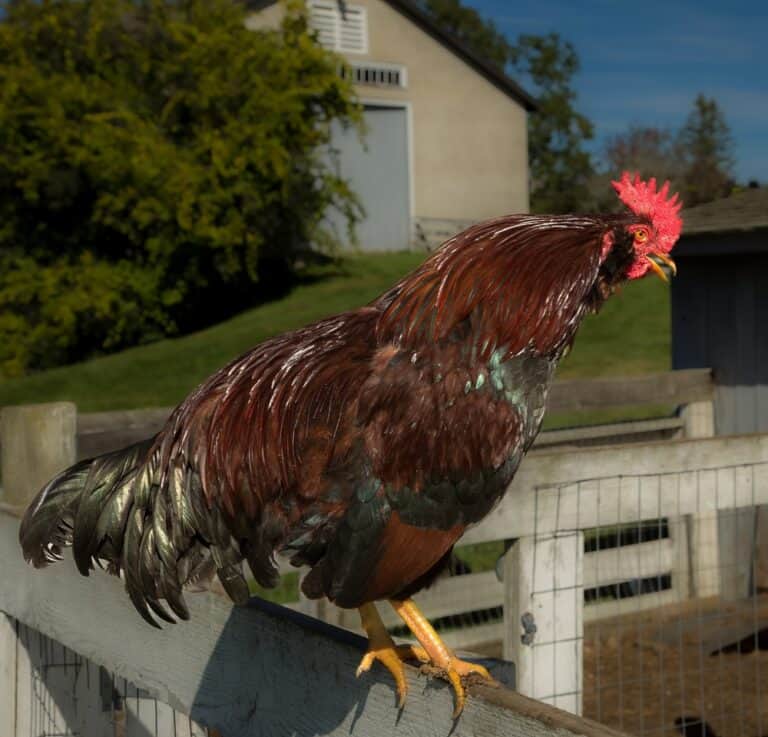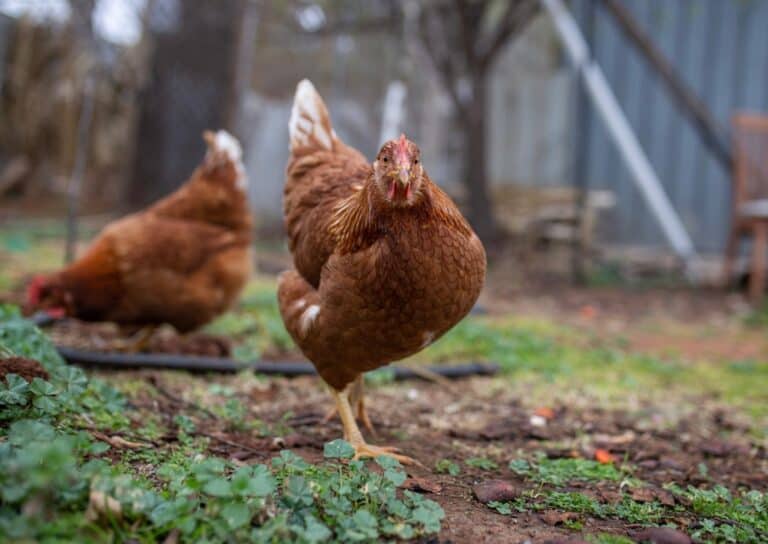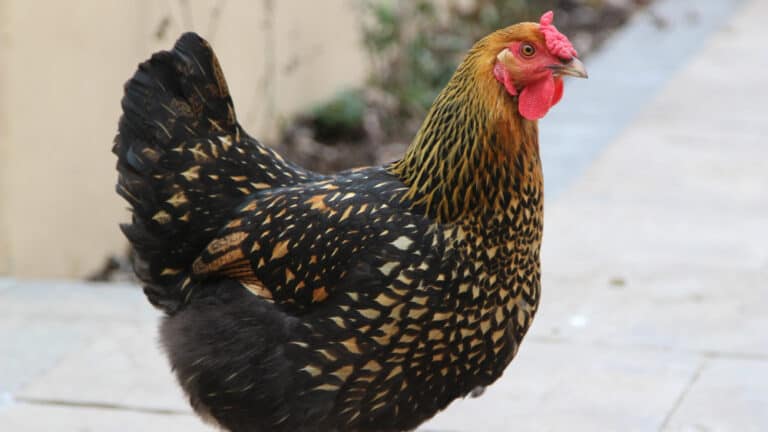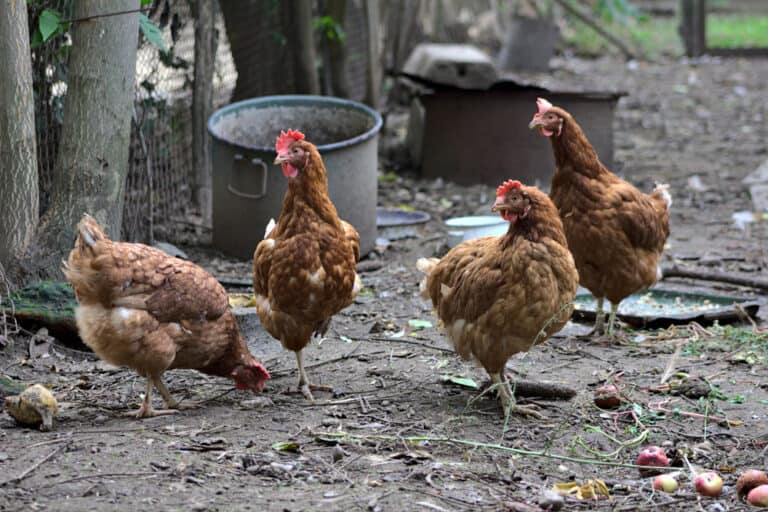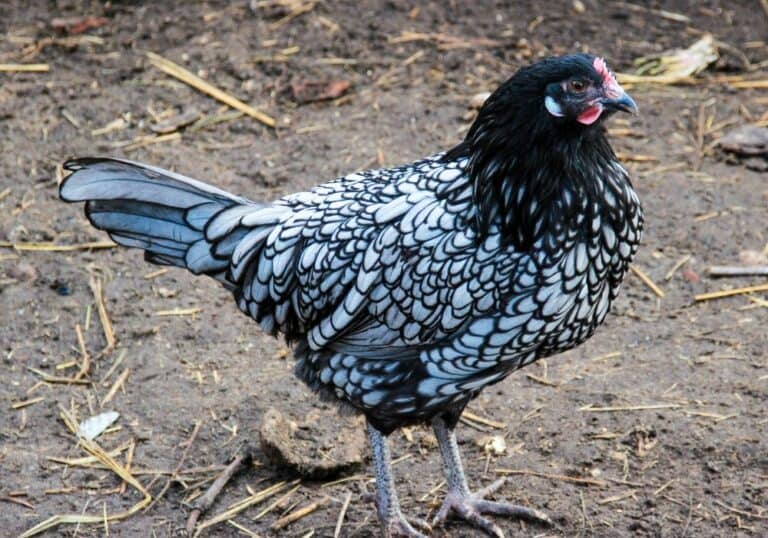Chickens are delightful creatures that come in a bewildering array of shapes, sizes and colors, and many breeds have unusual or even unique features.
One trait that several breeds possess is feathered feet, and if you’d like to learn more about which types have them, in this post, we discuss some of the most famous or interesting chicken breeds with feathered feet.
Chicken Breeds with Feathered Feet
1. Booted Bantam
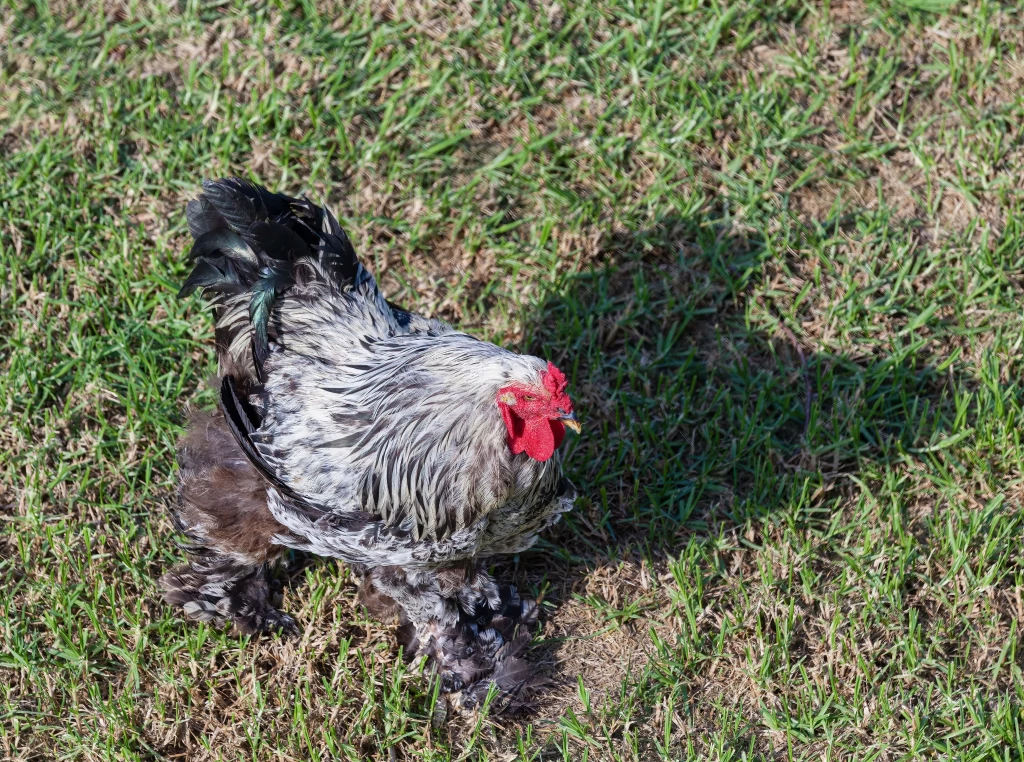
Although booted bantams are sometimes known as Dutch booted bantams, their lineage is mixed – they are descended from German and British chicken breeds as well as ones from the Netherlands.
They are a true bantam breed, which means there is no corresponding full-sized bird, and they are easily distinguished by their diminutive size and their heavily feathered shanks and feet – as well as their “vulture hocks”, stiff feathers projecting downwards behind the leg.
The Entente Européene accepts 33 color variations while the Poultry Club of Great Britain accepts 11 and the American Poultry Association accepts only five. The breed is short and compact with a short back, and they carry themselves with the breast held forward.
Since these chickens are so small, they are not much use for either meat or eggs – they can lay up to 120 eggs a year, but most people will think the tiny eggs are hardly worth the effort.
This means they are most commonly kept for show – but since booted bantams have a pleasantly calm and friendly disposition, they also make good pets.
2. Brahma
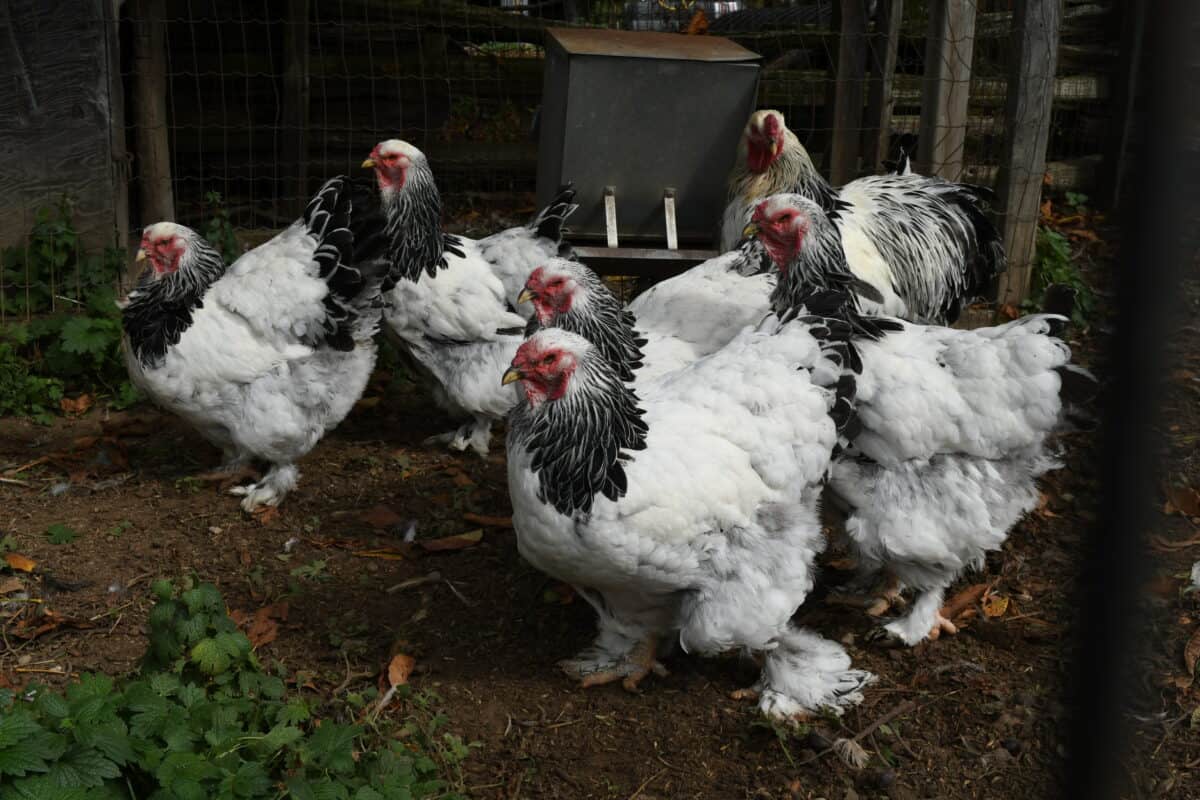
The brahma is a large dual-purpose breed that was the principal meat bird in the United States from the 1850s to the 1930s.
They were first developed in the US from stock that arrived in North America around 1840 from Shanghai in China – and for this reason, they were originally known as “Shanghai chickens”.
According to the American Poultry Association, there are three officially accepted colors, light, dark and buff. The dark version was bred in Britain from birds sent there from the US, after which, they were re-exported back to America.
Brahmas have noticeably feathered legs and feet, another prominent feature of the breed.
Since roosters can weigh as much as 18lbs and hens can reach 13lbs (although birds this heavy are not the norm), it’s easy to understand why they were often kept for their meat.
However, they can also lay up to 300 eggs a year, making them an excellent breed for egg production.
In the past, this breed fell out of favor, but they have made a comeback in recent years and are popular among backyard chicken keepers – so although they are one of the more expensive chicken breeds to purchase, they are not as expensive as they once were.
3. Barbu d’Uccle
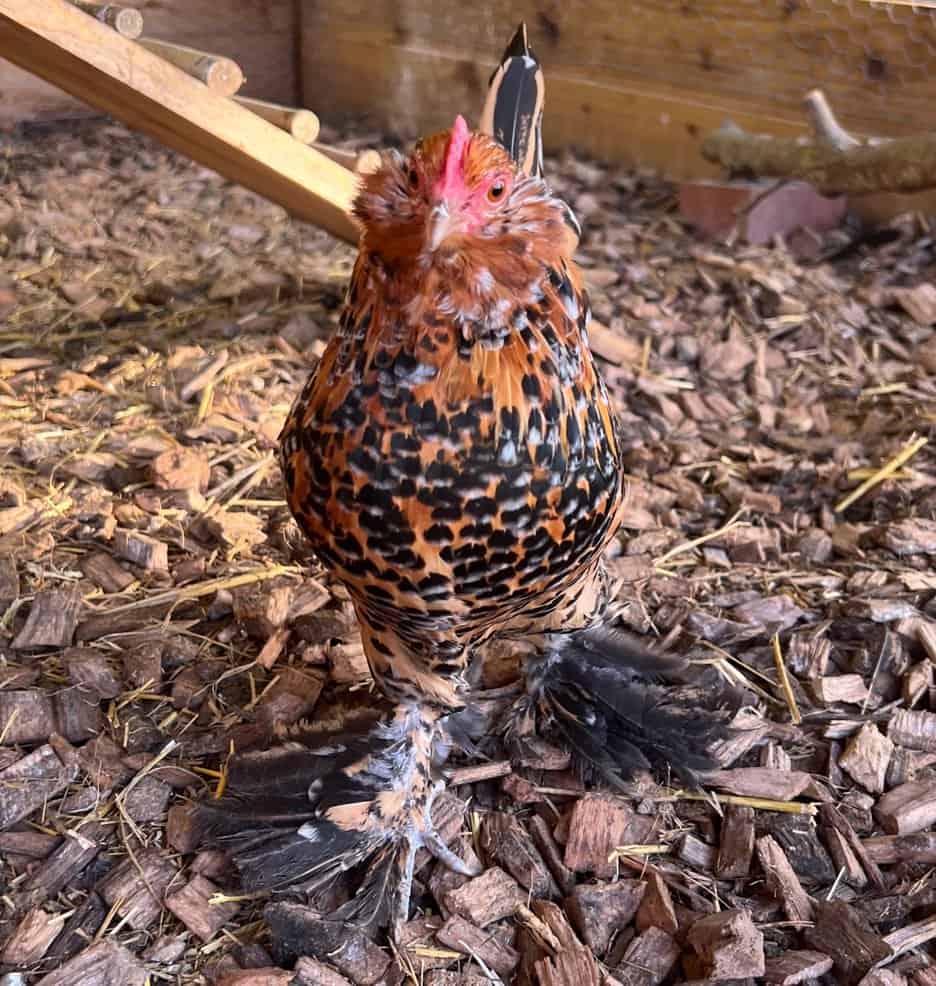
Another breed that sports feathered legs and feet is the barbu d’Uccle, a type of chicken that was originally created in the Belgian town of Uccle at the start of the 20th century.
It is believed that the breed was created by crossing a booted bantam with a barbu d’Anvers, another similar type of bird.
The resulting breed was distinguished by its full beard (“barbu” is French for “bearded”) and muff as well as its heavily feathered legs and feet.
It was first shown in 1905 and was already well established by 1909, first reaching the UK in 1911. Nowadays in its native Belgium, 28 colors are listed, but the American Poultry Association accepts only seven.
Like the booted bantam, these birds are mostly kept for show, although their gentle, inquisitive, docile and friendly nature marks them out as an ideal chicken species to keep as pets.
However, unfortunately, these adorable birds are now listed as being critically endangered and only a few of them are left in the world, mostly in Belgium where they originated.
4. Cochin
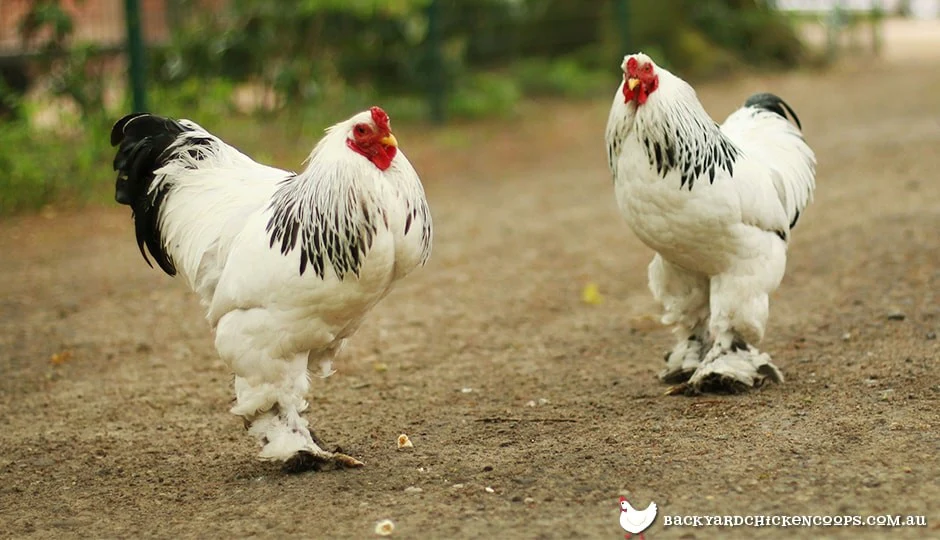
Like the brahma breed, cochin chickens originally arrived in Europe and the US from China around 1840. At first, they were known as Cochin-Chinas and Shanghais, creating some confusion – since brahmas were also known as Shanghais at one stage.
Cochin chickens are large and impressive to look at with a striking plumage and heavily feathered feet and legs.
Unsurprisingly, due to the way it looks, this breed was developed primarily for showing. However, it is a productive layer of large eggs, even into winter, and is also known to be such a good sitter that it is often used to incubate the eggs of other species such as ducks or turkeys.
In addition, they are docile chickens that can be tamed easily, and they can also form strong bonds with their keepers, making them a good breed to keep as a pet – especially for those with children.
5. Pekin
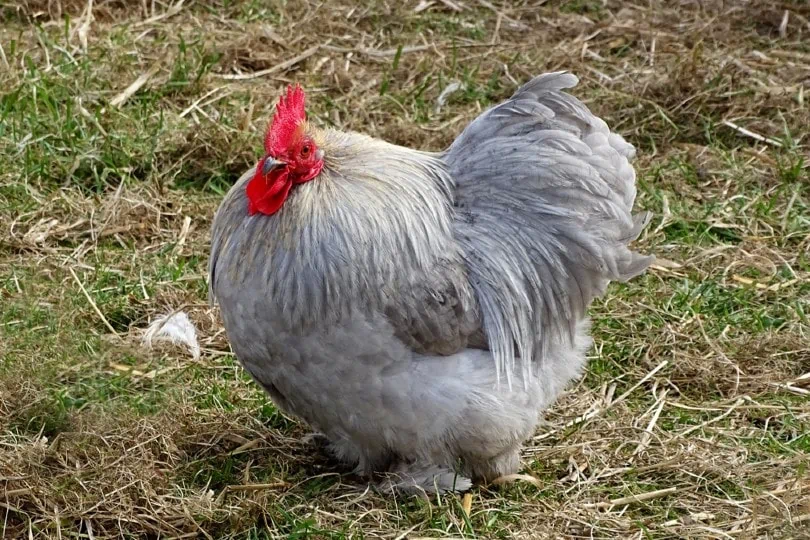
There is some debate in poultry circles over the exact classification of the pekin.
In the US and Canada, these birds are merely a bantam version of the cochin chicken, but in Britain, they are considered a true bantam breed that has no separate full-sized version, and the cochin is seen as a separate breed.
In any case, although they are named for the Chinese capital Peking (now spelled Beijing) where the original stock is thought to have come from, the breed was fully developed in Britain, and pekins are now available in a wide range of attractive colors.
They are small birds of around 1.5lbs for males and 1.25lbs for females, and they have a fluffy plumage with well-developed feet and leg feathers.
Like cochins, they are docile and friendly – although males can become a little aggressive when protecting their flock or territory – so they are another good choice for a family pet, especially if you don’t have much space due to their small size.
6. Croad Langshan
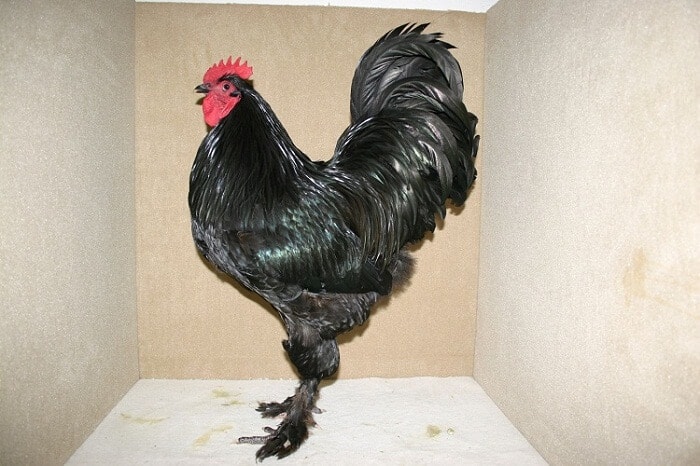
Yet another feather-footed chicken breed with Chinese origins, this type of chicken is named for Lang Shan, or “Wolf Hill”, located in China’s Jiangsu province near the town of Nantong.
Back in the late 19th century, Major Croad, an officer in the British army, imported chickens from the area, and the breed was then developed by his niece back in Britain.
They became popular as an attractive chicken with feathers on its legs and feet that was nevertheless a productive layer and resistant to cold weather.
However, later, after World War II, the breed was almost lost and was only saved thanks to the efforts of the Rare Poultry Society.
Nowadays, this breed exists in white, blue or black, the latter displaying a green sheen on the feathers in the right light.
As well as retaining the hardiness of the original breed, Croad Langshans have a calm and gentle disposition and are known as independent chickens and good foragers, all of which makes them an excellent choice for beginners.
They are a separate breed from the modern Langshan, which was developed primarily for showing.
7. Faverolles
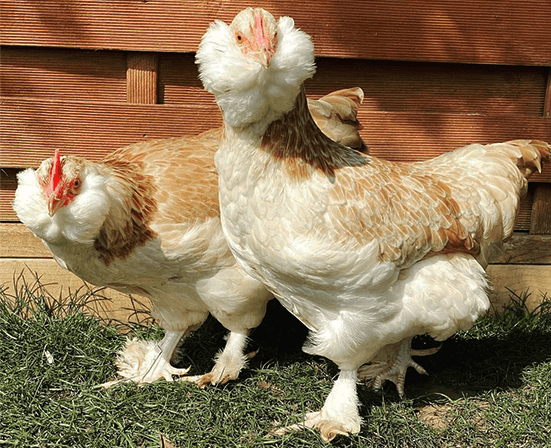
A bird named after the village of Faverolles in France where it was originally developed in the 1860s, this breed is well known for its extreme docility and friendliness, a personality that matches well with its cute appearance and fluffy feathered feet.
The Faverolles is a large chicken breed that can be kept for meat, but it’s also a good layer, so it’s often kept for eggs or as a dual-purpose bird.
Since it tolerates confinement well, it was the breed that was used to produce most of the eggs sold in Paris at the turn of the 20th century as battery farming began to develop, but nowadays, it is most commonly kept simply for showing.
As well as its feathered feet, the Faverolles can be distinguished by its beard and muffs as well as the extra toe on each foot – Faverolles chickens have five toes while most other breeds have only four.
Due to its quiet nature, this breed of chicken will often be bullied by more assertive breeds if kept in a mixed flock. However, it does very well in flocks consisting only of other Faverolles or chickens from less dominant breeds.
8. Marans
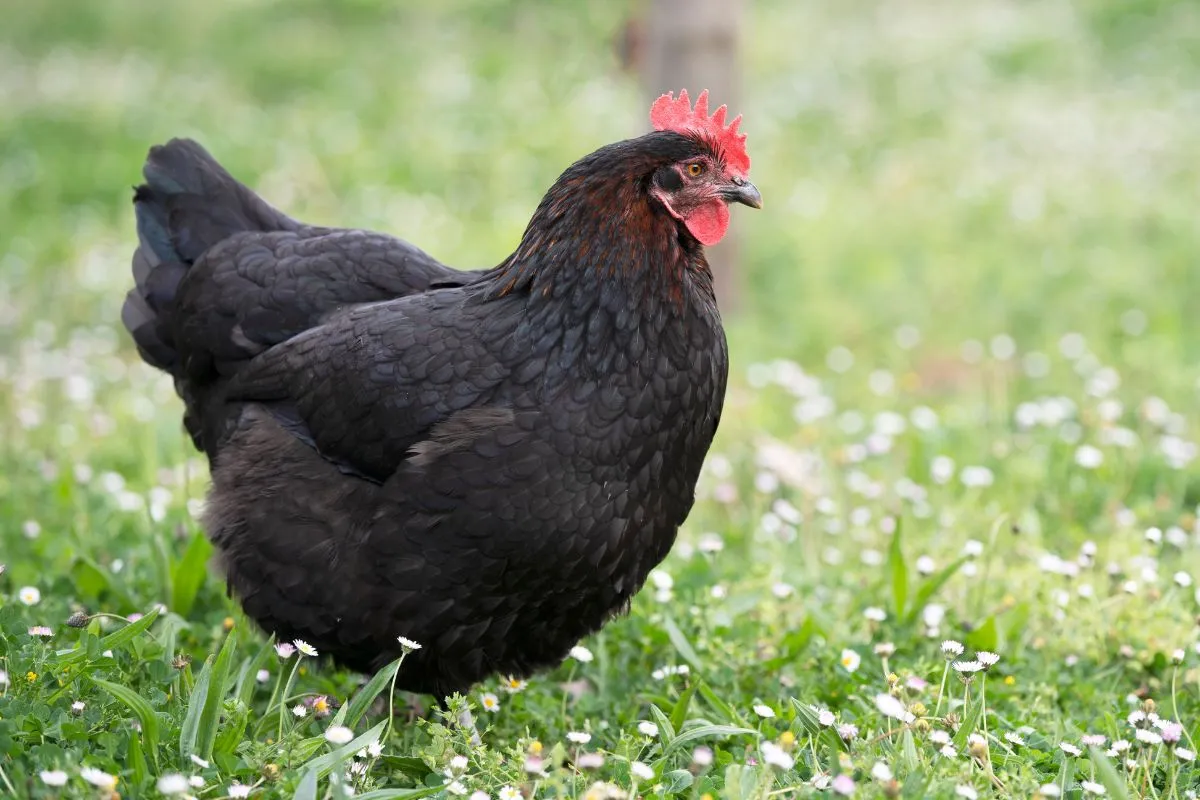
The Marans breed was created in the village of Marans in southwestern France when local feral chickens descended from fighting birds from Indonesia and India were combined with Croad Langshans to improve their qualities as utility birds.
The resulting breed became established by the 1930s when standards were drawn up, and they were appreciated both for their meat and their dark brown eggs.
However, a split in the breed occurred at around this time when eggs were taken to Britain. British breeders preferred these chickens to have featherless legs, so they bred this trait out of their birds.
As a result, in Britain, both feathered and unfeathered varieties are accepted but in France, British birds with unfeathered feet and legs don’t meet the breed standard.
To this day, this breed continues to be kept as a dual-purpose chicken, although they make an indifferent pet since their personalities are unpredictable.
9. Silkie
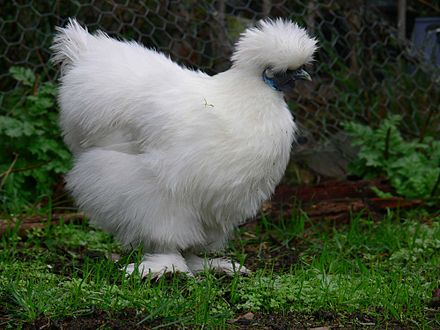
A unique breed of chicken thought to have originated in China many centuries ago, the silkie is easily distinguishable by its fluffy plumage that more resembles the hair of a mammal than the feathers of a bird.
It’s possible that Marco Polo was referring to silkies when he wrote about a peculiar furry chicken at the end of the 13th century, and when they arrived in Europe, some people even believed they were the result of a cross between chickens and rabbits!
Another distinguishing feature of silkies is that they have five toes on each foot, a rare trait they share with Marans. Their fluffy feathers extend down onto their legs and feet, creating what has to be one of the cutest chicken breeds possible.
They are not good layers – although they are exceptional sitters – and their affectionate nature makes them a great option as a pet, even around children.
At the same time, their unique plumage requires extra care, and they don’t do well in wet conditions or cold weather, so while they are suitable for beginners, they will require more attention than some other hardier chicken breeds.
10. Sultan
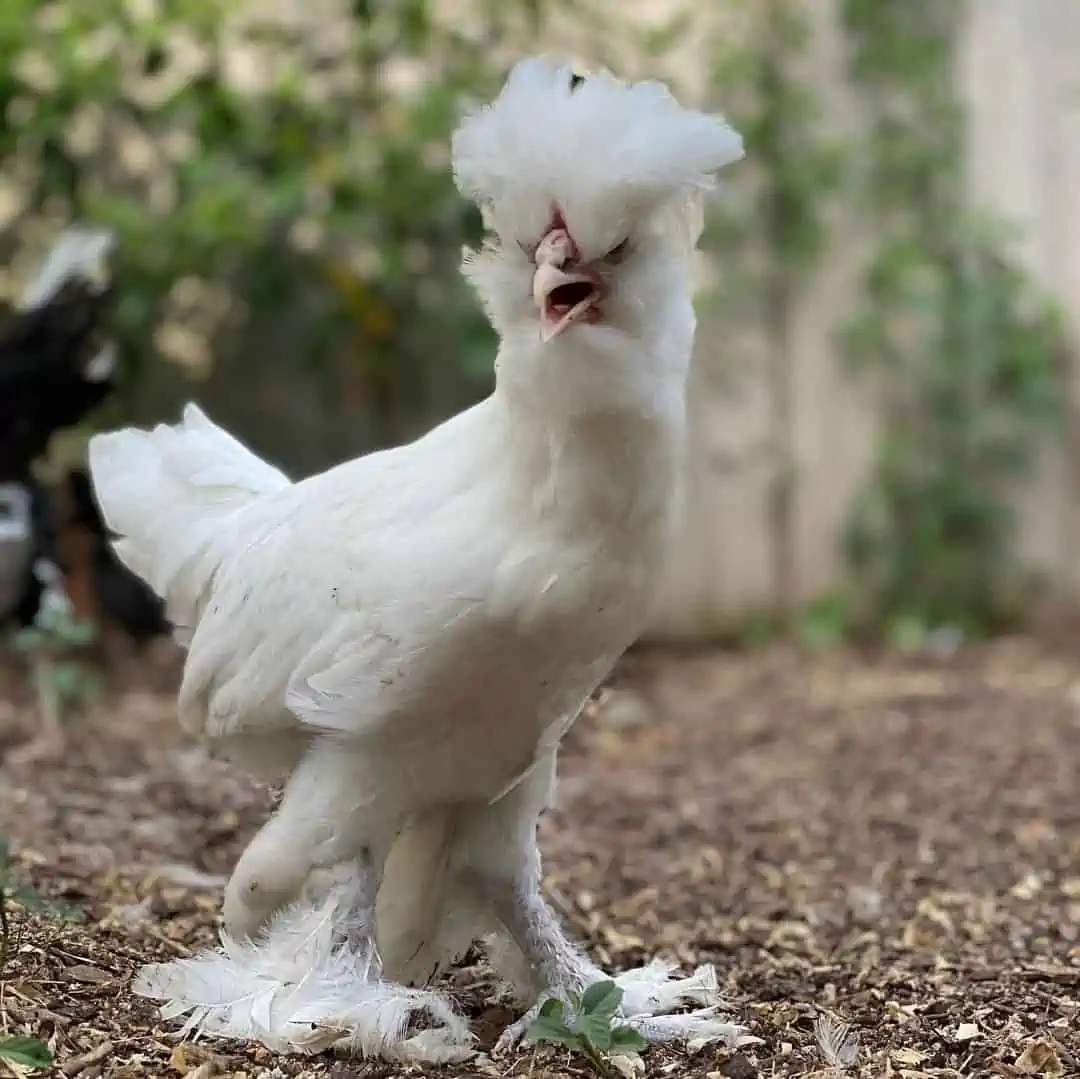
Formerly kept primarily for show in the palace gardens of the Ottoman rulers, sultan chickens are almost entirely ornamental since they are poor layers, don’t go broody and are mostly unable to fend for themselves.
If they are kept with other chickens, they are likely to be bullied, they are poor at evading predators and they don’t do well in either cold or wet conditions. At only 6lbs for males and 4lbs for females, they are not suitable for keeping as a table bird either.
However, they are one of the most attractive chicken breeds around and feature a beautiful decorative plumage with a large, puffy crest, beards, long tails and plenty of foot and leg feathering.
They are also extremely friendly and docile, so if you are looking for an amenable bird with a striking appearance that won’t do anything to earn its keep other than look pretty, this rare chicken could be just the breed you’re looking for!
A note about chickens with feathered feet
If you’re wondering why chickens have feathered feet, the simple answer is that people have bred them to be that way.
Feathered feet can occur naturally through genetic variation or mutation, and at various points in the history of the domestic chicken, breeders have seized upon this to deliberately create chicken types with feathered feet and legs.
However, more important than knowing why is understanding how this affects how you should care for such chickens since they require a little more attention than other breeds.
For example, while many – although not all – chicken breeds with feathered feet are resistant to cold, they don’t do well in wet or muddy conditions since their feet feathers can get wet or dirty.
This can be even more of a problem when the weather is cold and wet since chickens with feathered feet are then at risk of frostbite.
Another issue is lice and mites, so keepers need to pay more attention to keeping them free of parasites.
So in short, in some ways, these chickens can be hardier than other breeds – but in others, they require more careful attention.
Many breeds to pick from
As we have seen, if you like the idea of chicken with feathered feet, there are plenty of breeds to pick from, all with their own special characteristics and personalities.
Just be aware that some of these species require a little extra attention, but most people would agree that it’s worth a little extra work to add such interesting birds to their flocks.

